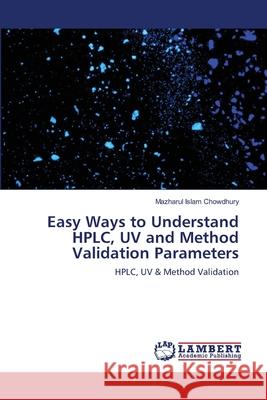Easy Ways to Understand HPLC, UV and Method Validation Parameters » książka
Easy Ways to Understand HPLC, UV and Method Validation Parameters
ISBN-13: 9783659402395 / Angielski / Miękka / 2013 / 52 str.
High-pressure liquid chromatography (HPLC) used in the analytical development to quantify the biological sample concentration, the active pharmaceutical ingredient (API) and to evaluate the impurity and degradation product profiles of the drug substances (DS) and drug products (DP). Additional uses of HPLC include determination of content uniformity of dosage form, monitoring of dissolution profiles, determination of antioxidants and preservative content and supporting of cleaning validations. UV spectroscopy is one of the most frequent used techniques in pharmaceutical analysis. It involves the measurement of UV radiation absorbed by a substance in solution. The wavelength range of UV radiation is 200-400nm (180-380 nm) and the UV radiation has a sufficient energy to excite valance electrons in many atoms or molecules; consequently, UV is involved with electronic excitation.
High-pressure liquid chromatography (HPLC) used in the analytical development to quantify the biological sample concentration, the active pharmaceutical ingredient (API) and to evaluate the impurity and degradation product profiles of the drug substances (DS) and drug products (DP). Additional uses of HPLC include determination of content uniformity of dosage form, monitoring of dissolution profiles, determination of antioxidants and preservative content and supporting of cleaning validations. UV spectroscopy is one of the most frequent used techniques in pharmaceutical analysis. It involves the measurement of UV radiation absorbed by a substance in solution. The wavelength range of UV radiation is 200-400nm (180-380 nm) and the UV radiation has a sufficient energy to excite valance electrons in many atoms or molecules; consequently, UV is involved with electronic excitation.











